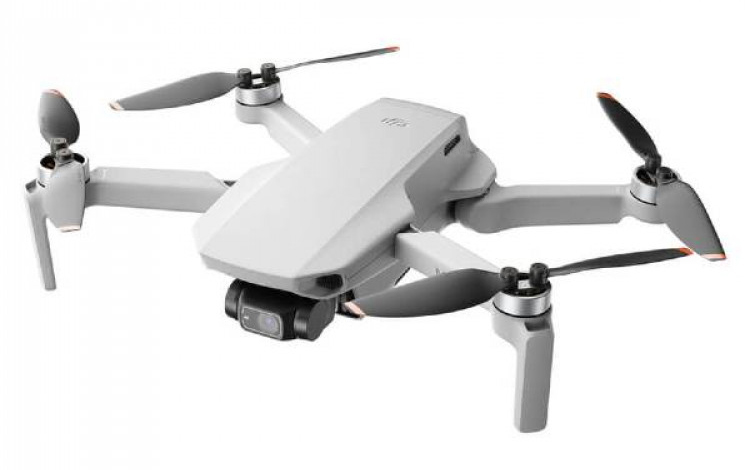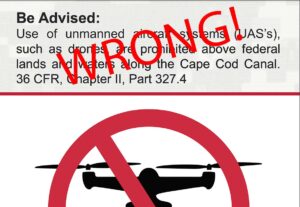DJI Mavic Mini, is it safe to operate over people?

In late 2019, Brent and Jakee at 107Waivers had a burning question in their minds… could the DJI Mavic Mini safely operate over human beings and get a §107.39(a) waiver? It is a lightweight drone after all and weighs less than 250 grams without the prop guards. This meant that the DJI Mavic Mini size:
- Was consistent with the Micro Aviation Rulemaking Committee’s (ARC) recommendations in April 2016 that small unmanned aircraft (sUA) under 250 grams could use over people unrestricted.
- Was consistent with Category 1 of the FAA’s Notice of Proposed Rulemaking for Operations Over People published in February 2019.
Both the Micro ARC and NPRM indicated an sUA under 250 grams could operate in an unrestricted manner over people. We knew the Mavic Mini was under 250 grams and we thought asking for a 107.39(a) waiver based on weight alone might work. However, we decided to go one step further and really wow the FAA with some testing of the Mavic Mini’s injury severity potential. Surely the FAA cannot deny our waiver if the sUA complies with Category 1 of their own NPRM AND we take it one step further and show it does not injure people from kinetic energy or laceration? (hint, they did)
The rest of this post focuses on the laceration testing 107Waivers did because as we all now know, the new Operations Over People rules require the drone to be under 250 grams (check) and not lacerate human skin on impact (need to test this).
Laceration Testing
We were familiar with ASSURE’s Ground Collision Severity report which described some initial testing on the laceration potential of sUA. The report shows a setup with a piece of synthetic skin on a pendulum swinging into what looks like a Phantom 4 propeller. The researchers then analyzed the cuts that were made in the synthetic skin. Bingo – all we need to do is replicate some synthetic skin swinging into the Mavic Mini propellers.
We made a shopping run to Menards (you know this place if you are a Midwesterner) for pendulum materials and other supplies and found some synthetic skin for sale online. Synthetic skin comes in a lot of different thicknesses to replicate different areas of the body and we chose a thickness that resembles the skin on your forearm (not too thick, not too thin). After creating a setup that could swing the synthetic skin down into the arc of the spinning Mavic Mini propeller, we got to testing. The results may surprise you in that we found the Mavic Mini causes only partial thickness lacerations which resemble a bad paper cut. Not a laceration.
You can download our report with test results here.
Waiver Application
So, in early 2020, with our Mavic Mini injury severity report in hand, we submitted our waiver application for 107.39(a) and claimed that the DJI Mavic Mini could safely operate over people. The FAA denied our request claiming that rulemaking was impending, and they did not want to approve any new 107.39 waivers until the rules were released. They commended us on our report, however. So overall swing and a miss on receiving a waiver. So, we waited patiently for the new rule…
New Operations Over People Rules and How the DJI Mavic Mini Fits
Fast forward to the end of 2020 and the FAA released their new Operations Over People rules. These rules provide 4 categories for operations over people and the first category requires the RPIC self-certify the drone is under 0.55 lbs. and that it does not have exposed rotating parts that will lacerate human skin on impact. The FAA defines laceration as “a cut that goes all the way through the skin and requires immediate emergency medical attention”.
So, what does our story and report mean for you? 107Waivers report provides evidence that the DJI Mavic Mini is safe to operate over people under Category 1 of Part 107! Perfect! The only caveat is that this report is not legal advice nor legal authority to operate the DJI Mavic Mini over people under Category 1. That responsibility is the Remote Pilot in Commands. Here’s how 107Waivers suggests you use this information and report.
- You can agree with the report’s outcome and methodology that the DJI Mavic Mini is safe to operate over people.
- In this case, the RPIC maintains the final authority to comply with Category 1. This includes taking the action to weigh your Mavic Mini before each flight to ensure it is under 0.55 lbs., ensuring that the DJI Mavic Mini is in a stock configuration particularly with respect to the propellers, and still safely operate the drone when around human beings. This might mean taking actions not to “buzz” people at low altitudes or high speeds, considering safe landing locations in the event something goes wrong, and working with event planners and law enforcement to let them know a drone may be working overhead.
- You can disagree with the report’s outcome and methodology and decide not to operate the DJI Mavic Mini over people.
Closing
107Waivers is excited about the new operations over people rules and the possibility for the DJI Mavic Mini to be used under Category 1. The DJI Mavic Mini provides a lot of photography and videography capabilities in a small, safe package. We think the ability to operate under Category 1 opens new opportunities for media to cover large gatherings of people in a new way, drone service providers to offer new angles for their clients, and companies to think about urban operations in a new way that does not require dodging people and cars or going to extreme lengths to clear an area. We also hope that this report can serve as a blueprint for testing other drones such as the DJI Mavic Mini 2 for the ability to operate under Category 1. Remember to continue flying safe though, even in new situations with new capabilities. That responsibility lies with you, the Remote Pilot in Command.
107Waivers blog post: https://www.107waivers.com/blog/mavic-mini-cat1
————————————–
Please consider joining Drone Service Providers Network to help support keeping the skies safe from unreasonable regulations.



